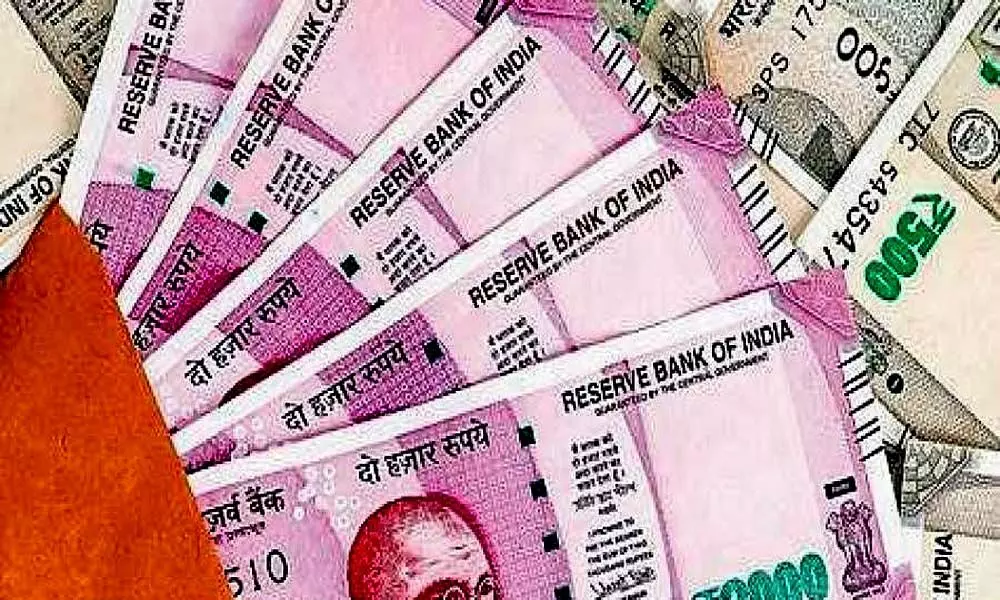Indian bonds gain as govt sticks to borrowing plan
Annual borrowings unchanged at Rs12.05 trillion; Yield on 5-year bonds drops by 5bps to 5.63%
image for illustrative purpose

Gains were more perceptible in the shorter end due to absence of goods and services tax-related extra borrowings and lower debt sales in the segment. Almost half of the supply is around the belly of the yield curve in 10-14 year bucket, while sales in five-year are around 12%, lower than about 20% in the first half, according to Emkay Global Financial Services Ltd
Subhadip Sircar and Vrishti Beniwal
Indian bonds gained after the government refrained from adding to its near-record borrowing plan for the year, bringing some supply relief to the market battered by rising Treasury yields and oil prices. The administration will adhere to its plan to borrow 12.05 trillion rupees ($163 billion) in the year through March, the finance ministry said in a statement Monday. The five-year bond yield fell by five basis points, while that on the 10-year bond declined by by three points.
Finance Minister Nirmala Sitharaman had earlier indicated that the government may borrow about 1.6 trillion rupees extra, which led to traders expecting higher sales for the second half. The unchanged borrowing is supporting the domestic bond market weighed by the surge in US Treasury yields on rising bets for the Federal Reserve to start tapering stimulus soon.
"The borrowing numbers are definitely good, better than what the market was expecting," said Anand Bagri, head of domestic markets at RBL Bank Ltd. Other factors like crude hitting the $80 mark and higher US Treasury yields are hampering the market sentiment, he said.
Shorter yields fell more after RBI kept borrowing program unchanged
Gains were more perceptible in the shorter end due to absence of goods and services tax-related extra borrowings and lower debt sales in the segment. Almost half of the supply is around the belly of the yield curve in 10-14 year bucket, while sales in five-year are around 12 per cent, lower than about 20 per cent in the first half, according to Emkay Global Financial Services Ltd.
The yield on the 5-year bond fell by five basis points to 5.63 per cent, while the benchmark 10-year bond yield declined by three basis points to 6.19 per cent on Tuesday. It's still up by seven basis points since last week as rising crude prices threaten to exacerbate inflation in the net oil importing nation. The Reserve Bank of India's withdrawal of liquidity from the banking system has further weighed on sovereign debt. The central bank has started making its bond purchase program liquidity-neutral since last week by including an equivalent sell leg to the auctions. It has also started shorter variable rate repo auctions to modulate shorter-term liquidity. "The 10-year yield is likely to range between 6 per cent-6.2 per cent in the coming quarter, with rising crude oil prices to counteract the benign borrowing figures," Aditi Nayar, chief economist at ICRA Ltd.
Market focus will now shift to a key index review by FTSE Russell for the nation's bonds on Thursday and any potential inclusion will add to gains.
The government plans to sell 5.03 trillion rupees of bonds in the six months to March, compared with an earlier plan of 4.8 trillion rupees. The marginal increase is due to the shortfall in the first half borrowing. First half borrowings were 7.02 trillion rupees, compared with 7.24 trillion rupees planned, according to the statement. The second-half borrowing will factor in compensating states for a revenue shortfall caused by the pandemic.
Finance Minister Nirmala Sitharaman said in May that the government will borrow about 1.6 trillion rupees additional on behalf of states to compensate them for the shortfall in the goods and services tax revenues. Instead of extra borrowings, the central government passed 750 billion rupees from their own borrowings due to improved revenues in the first half.
India's net direct collections jumped by 74 per cent to 5.7 trillion rupees as on September 22, the government said last week. Revenue collections from goods and services tax rose by 30 per cent to 1.12 trillion rupees, slightly lower than 1.16 trillion rupees in July. (Bloomberg)

